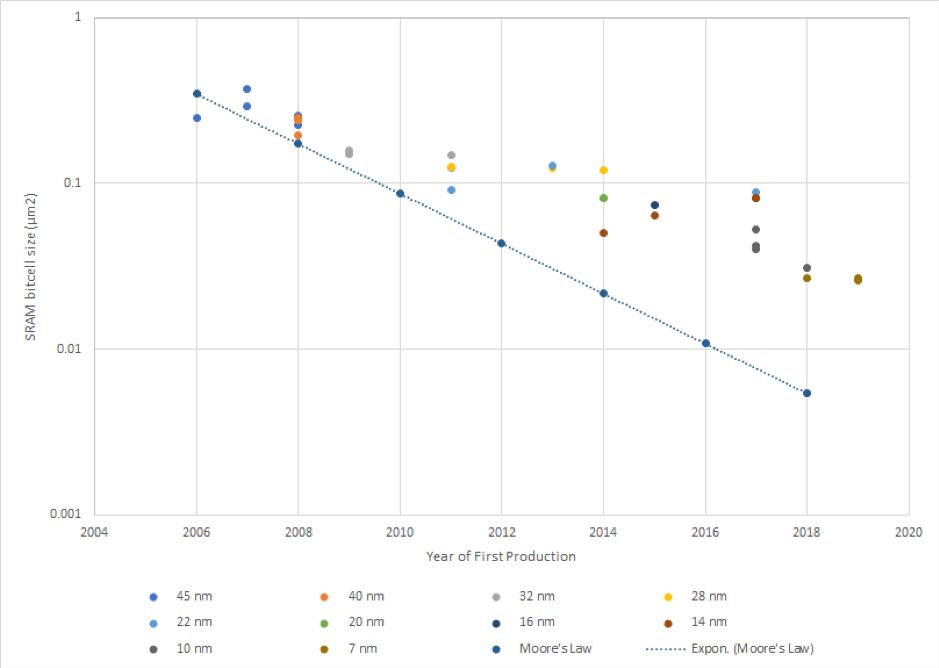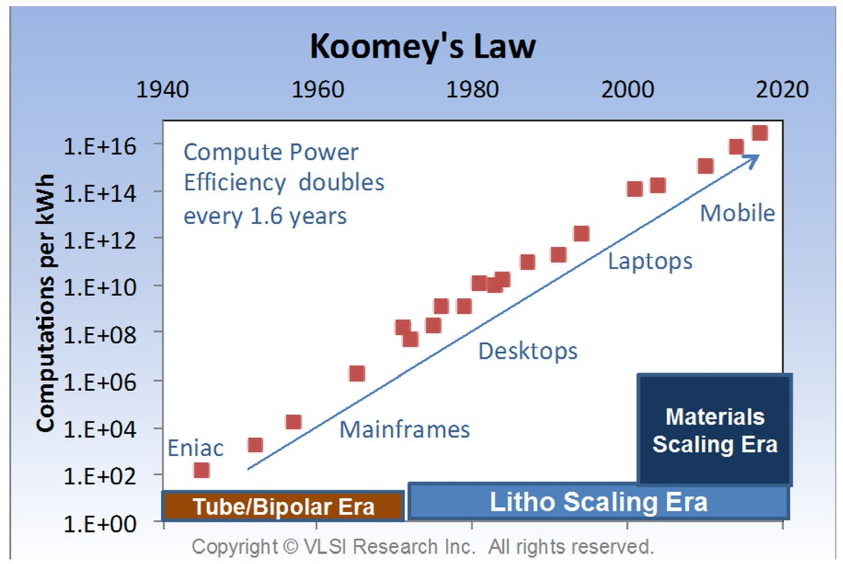Moore’s law (which has held true from 1965 to about 2015) is running out of steam even though the number of transistors in ICs keeps increasing:

So besides ICs going multicore and coming up with new architectures to increase processing power, what other elements can we look at to gauge technological innovation in the semiconductor industry ?
Koomey’s law, first introduced in 2011, (Koomey, Jonathan & Berard, Stephen & Sanchez, Marla & Wong, Henry. (2011). Implications of Historical Trends in the Electrical Efficiency of Computing. Annals of the History of Computing, IEEE. 33. 46 – 54. 10.1109/MAHC.2010.28.)
is actually quite interesting to look at in the context of the Internet of Things. This law, which is more recent than Moore’s law and states that the energy efficiency of computers/semiconductor chips doubles roughly every 18 months.

https://images.app.goo.gl/PycxscjyuHYRrvRo7
This is not only applicable to servers but also to our smartphones.

From: Dan Hutcheson,Moore’s law, lithography, and how optics drive the semiconductor industry, March 2018. https://bit.ly/2Wgk19m
What is even more exciting for us is that this trend enables new types of energy generation and storage for the Internet of Things. It is particularly highlighted in a fascinating publication IoT Energy Storage – A Forecast, Energy Harvesting and Systems (Häggström, F., & Delsing, J. (2018). IoT Energy Storage – A Forecast, Energy Harvesting and Systems, 5(3-4), 43-51. doi: https://doi.org/10.1515/ehs-2018-0010
The following graph shows that the energy per bit and meter (of transmission) for RF modules halves every 6 years !

Applications which were unrealistic 3 years ago are possible today. A recent game changing innovation is the Nowi 2 which opens the door for a whole new range of applications from wearables to industry 4.0 monitoring solutions.

Given how the range of innovations introduced by startups as we battle Covid-19, it would not be surprising if masks look very different in a couple of years…….
Show face mask with harvesting energy capability

Recent Comments